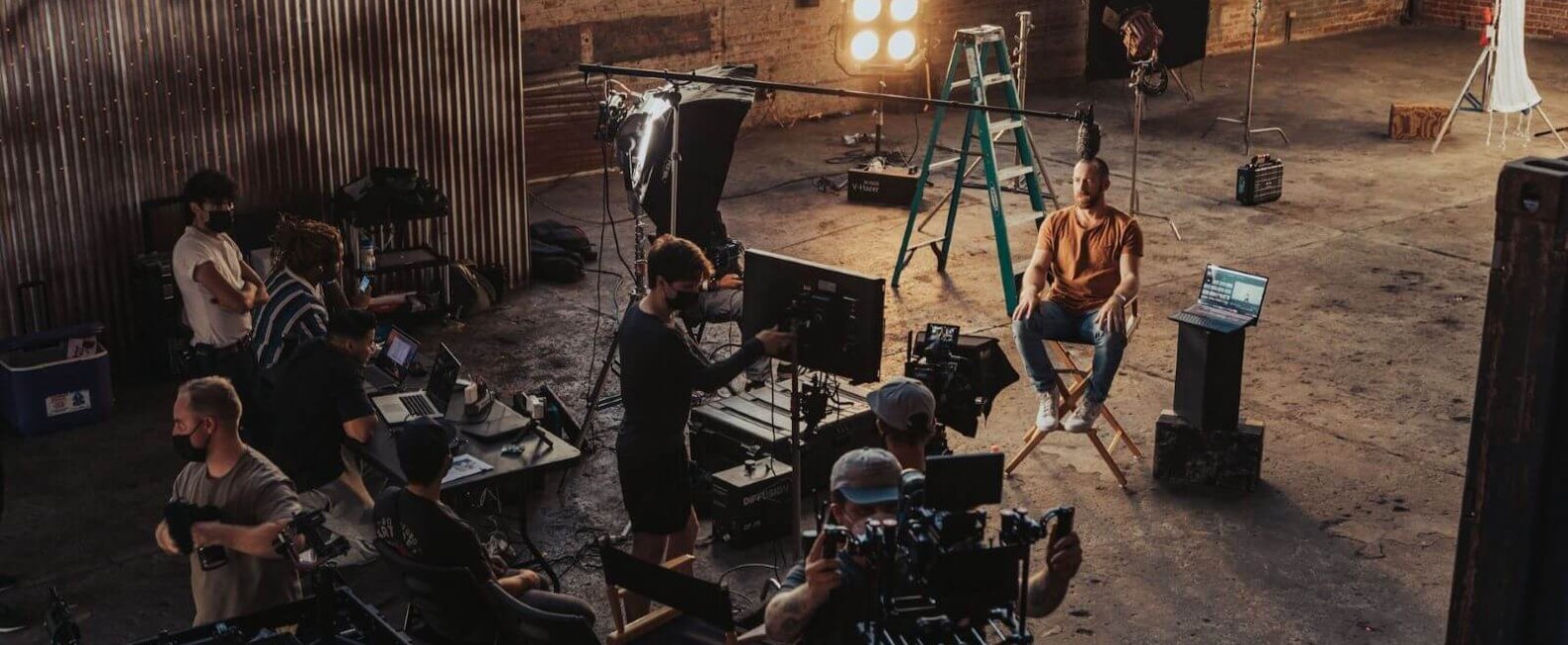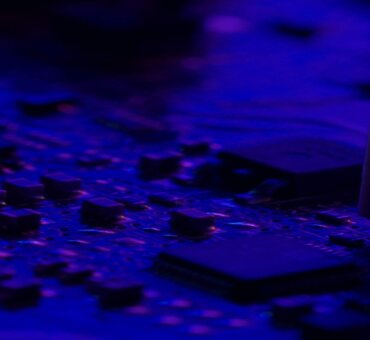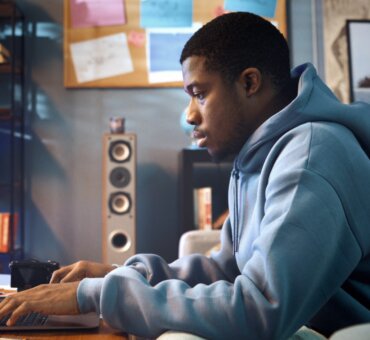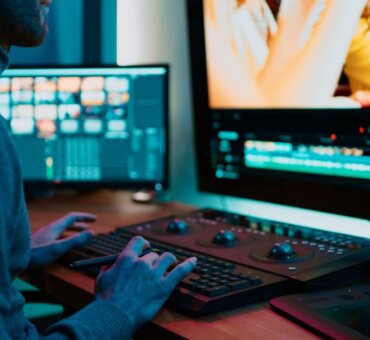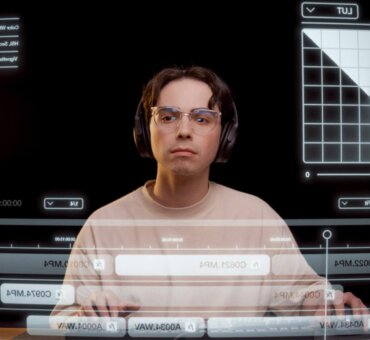When it comes to the world of film editing, there are plenty of cuts to understand and master. J cuts, L cuts, matches, crosses, and more. But what about the cutaway and insert shots? How do we use these in editing? Below, we’re taking a deeper look at the art of the cutaway—what it is, how and when to use it, as well as how it’s different from the insert shot.
What is a cutaway shot?
In video production, a cutaway shot is a type of cut editors use to literally cut away from the main scene and show something else. The shot that shows something else is used for a number of different reasons such as providing background information, further context, or fleshing out a story. In some cases, it may be simply used for visual variety or as a band-aid for editors to maintain continuity (due to some poor shooting).
In the below example, we get to see plenty of cutaways throughout. In this iconic scene from 300 (2006), King Leonidas is seen looking around the environment he’s in. Each cutaway (of families in the field, young boys, girls, even his wife) shows us what he’s looking at and adds more context to his decision-making. He’s choosing his next words carefully (as advised) by weighing up what’s at stake. As king, he speaks not only for himself but for the whole Kingdom of Sparta; therefore, he’s responsible for all of these people he’s looking at.
The importance of cutaways in films
There are a number of ways cutaways are used in films. Below, we’re looking at some of the most common.
Memories and dreams
When a character is reciting a dream or memory, cutaways are a great way to add visual variety and flesh out the story. Rather than remaining focused on the character reciting this dream or memory (that could be quite boring after a while), we can use cutaways to show this memory or dream to our audience, so that they can experience the same emotions as the character.
In Disney Pixar’s Coco (2017), we see Hector recalling his memories from the night he died and, as the scene plays out, it dawns on both us and Hector at the same time that actually, it was Enesto De La Cruz (what a great name) was the one who killed him.
Adding context
The cutaway shot can also be used to add context in real-time. As shown in the first example at the top of this article, perhaps if a character is looking around at something, the cutaways allow us to see what it is they’re looking at, giving us a better context of the scene. A great example of this is in Saving Private Ryan (1998) where we see Jackson, the sniper in the church tower. Not only do we see him shooting his rifle, but we see what he sees, through the scope. This is a startlingly realistic look at World War II warfare, bringing the scene and its brutal realities to life.
Referencing a different time or place
Alternatively, cutaway shots may be used to reference a different time or place completely. Again, similar to memories and dreams being recited, it might be quite a boring scene if you’re just focused on the character reciting it. When it comes to a character talking about another place or time, it can help to transport the audience there with a cutaway, so that they feel more clearly whatever emotions you want them to feel in that scene.
In this scene from The Lord of The Rings: Return of The King (2003), Gandalf talks about how Sauron is gathering his forces and the Witchking. So that we understand the gravity of the situation and feel the fear and terror, various cutaways show these gathering forces in far off lands, as well as the Witchking preparing for battle.
Building tension and showing action
Cutaways are a great way to build tension. If there are multiple things happening at the same time, it can be useful to thread these events together with cutaways.
For example in the first minute of The Battle of Osgiliath, from The Lord of The Rings: Return of The King (2003), we see the main scene of Faramir and his men taking up position and preparing for battle. The cutaways build real tension, serving us with new information as we see the orc army approaching and landing at Osgiliath. Between these cutaways we see Faramir and his men becoming more and more tense before finally, the two events join together as Faramir and his men attack. Throughout the battle, we follow Faramir, but cutaways are used to show the brutality of war and how Osgiliath is being overrun by the orcs.
Cutaway vs cut-in
You may have heard of cutaway shots and cut-in shots. Their roles do as they suggest. As we’ve established, a cutaway is when we’re cutting away from the main action. Juxtaposed with this, a cut-in is when we’re cutting back to the main action. This is demonstrated by Faramir’s storyline in the above example.
Cutaway shot vs insert shot
You may also have heard filmmakers use cutaways and insert shots interchangeably. They are similar in the sense that both involve cutting away from the main action in a scene to show something else. In other words, they’re both cuts! However, there is an important and useful distinction to remember.
An insert shot is a close-up shot of a specific object or detail that’s relevant to the scene. It can only be used if it’s a tangible, real thing that’s been established in the same scene. Meanwhile, cutaways can be used for a myriad of reasons (discussed above) and don’t necessarily have to be bound to and tangible within that scene.
Below is an example of an insert shot from Baby Driver (2017) where we see our main character doing what he does best. From pressing play on the iPod to the alarms going off and the details of the gear stick being struck into place, the foot to the pedal, and speedometer revving—all of the little insert shots throughout flesh out our scene with detail that make it that much better.
Sound design in cutaway shots
Sound design plays a really key role in cutaways. It helps to establish mood and tone within a scene, while also connecting the shot to the main action.
For example, with the real-time cutaway in the Saving Private Ryan sniper scene, we can hear Jackson breathing as he looks through the scope and shoots enemy soldiers. We can already hear him reloading before cutting away from the scope (a classic J Cut). The cutaway feels seamless because the sound is continuous from one shot to the next.
Meanwhile, when Gandalf is talking about the gathering armies in Mordor, we continue to hear his voiceover from the main scene playing over scenes of these armies. The sound design helps to invoke fear—we can hear the groans of war elephants and ships, as well as various ominous drones and whisps, all of which help us to feel unsettled.
How to shoot and edit cutaway shots
As you may have gathered by now, the art and technique of a good cutaway lies in continuity. When it comes to shooting cutaways – particularly inserts, where you’re in the same scene – you want to be very careful in ensuring that everything flows from one shot to the next, almost as if it’s one long continuous shot. If you’re shooting in a certain location for both the main scene and cutaways, make sure the lighting is the same, props and objects are as they should be, and that whoever is in the frame for the closeup (cutaway) is wearing and looking exactly how they do in the medium shot (main action). If something’s not quite right it’ll be very obvious to audiences and pull them out of the moment.
Meanwhile, on the editing side of cutaway shots, you’ll want to ensure that each of your cutaways feels seamless. Splice them in at a moment and pace that feels natural and adds value to the audience, rather than a distraction. If the cutaway is referencing a completely different time or place, whether through a memory or a dream, you should make sure that’s clear. For example, if necessary, you could add a location and date text overlay for flashbacks and memories. For dream sequences, the sound design and visuals could be enhanced and more dramatic, unless the narrative calls for the dream to be purposefully unclear.
Using stock footage for cutaways
Using stock footage can be a really useful way to cover any missing cutaways and insert shots. For example, let’s say we have a scene where our character is in Bali, looking down from the cliffs, surveying the surf. Great, but…we forgot to shoot the shot of the surf!
On a site like Filmsupply, we can easily source beautiful, high-quality cinematic footage for this cutaway. When I searched for “Bali waves”, I found plenty of perfect cutaways, including this one.
Final thoughts
For as long as films have been around, cutaways and insert shots have proven incredibly useful for a multitude of reasons, as we’ve discussed here. For that reason, as long as films continue to be made, it’s safe to say we’ll be seeing plenty more cutaway shots—they’re a staple of any good edit and one of the essential skills any video editor should master.
With this guide, you can add the cutaway shot to your toolbox, making you a more accomplished, professional filmmaker.
Header image by Jakob Owens on Unsplash
